One weekend we drove down through Austria to Italy, cutting off a corner of Yugoslavia (Slovenia) as we went. Our first stop was Salzburg, where Mozart was born and raised. We did not linger there long. Not that I would have minded, but it wasn’t my car and I wasn’t driving. We parked in the lot pictured below and went to get something to eat. I don’t remember exactly where in Salzburg this was; I don’t think it was Mozart Square because the statue in the photo doesn’t look anything like the statue of Mozart there. When backing his VW out of the parking place, Bill sideswiped another car, a Mercedes. The damage to both cars was minimal, but the owners of the Mercedes were dining on a balcony a little way off and they heard the crash; they jumped up, shouting and yelling, and began to come after us. We got out of there fast. Not very nice of us, but we got away with it.
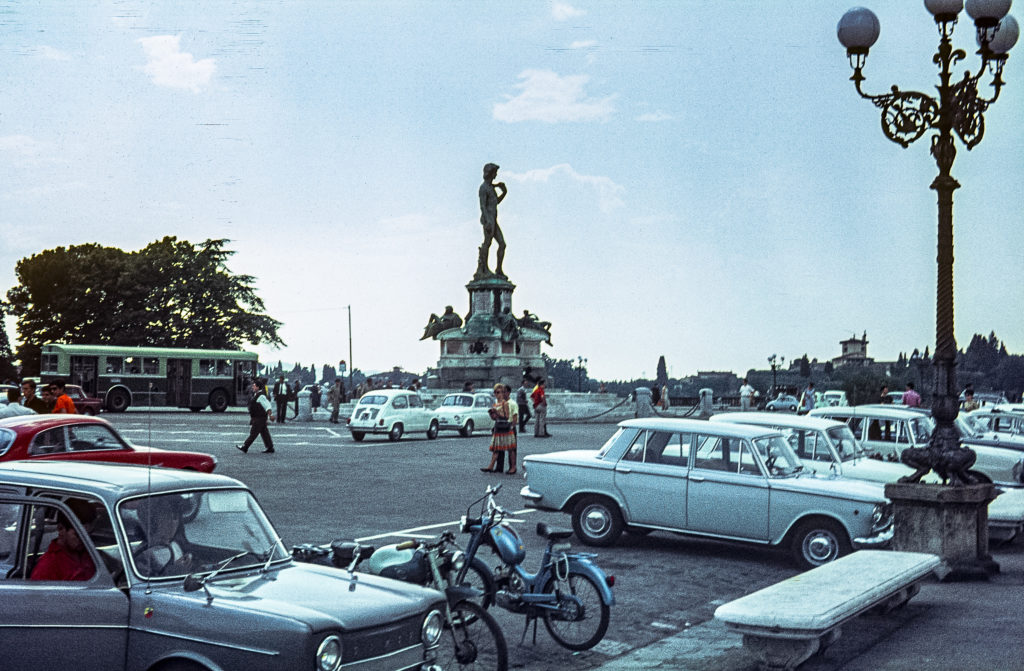
We drove on through Austria, enjoying the beautiful scenery of the Austrian Alps.
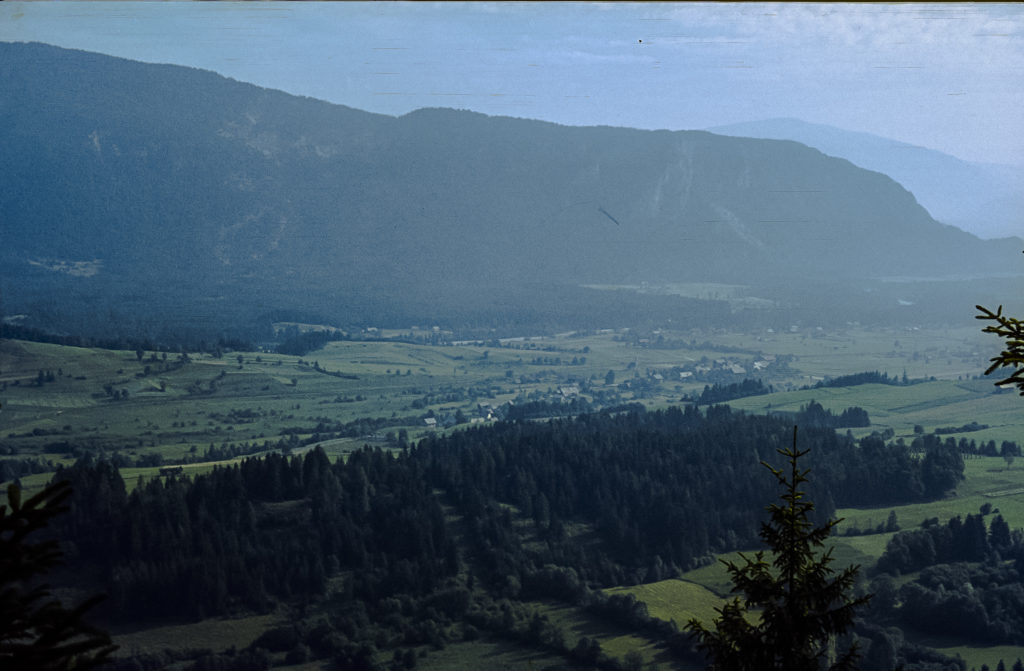
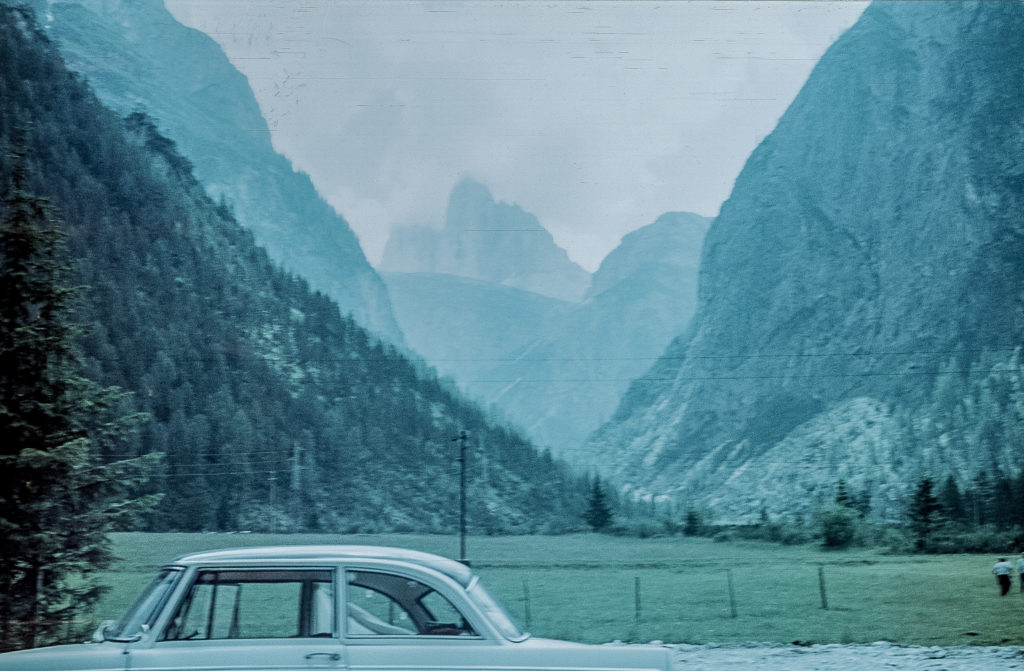
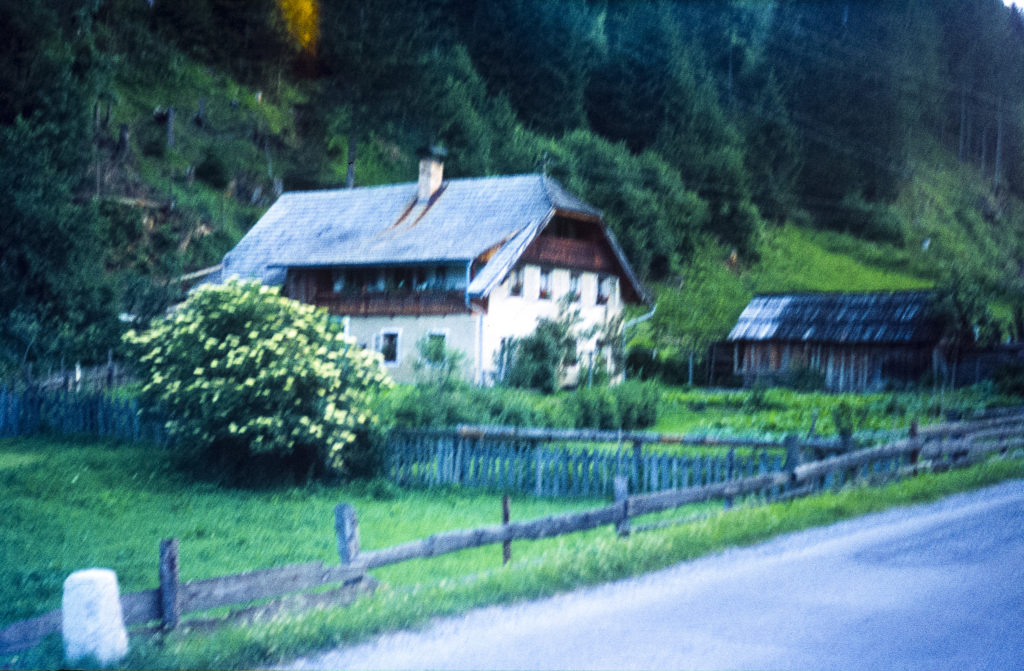
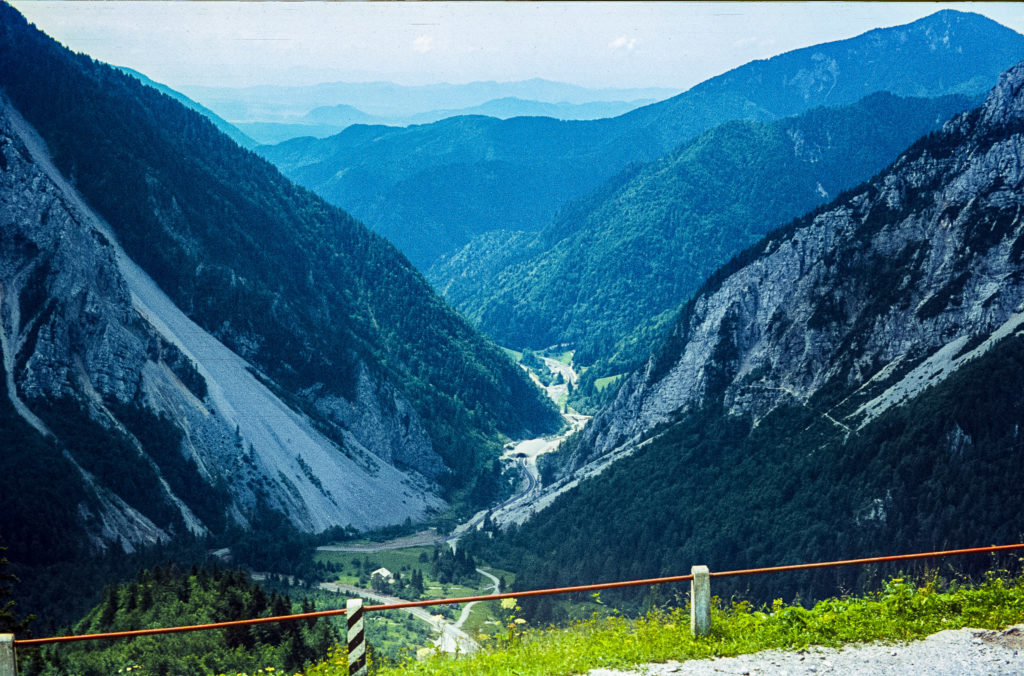
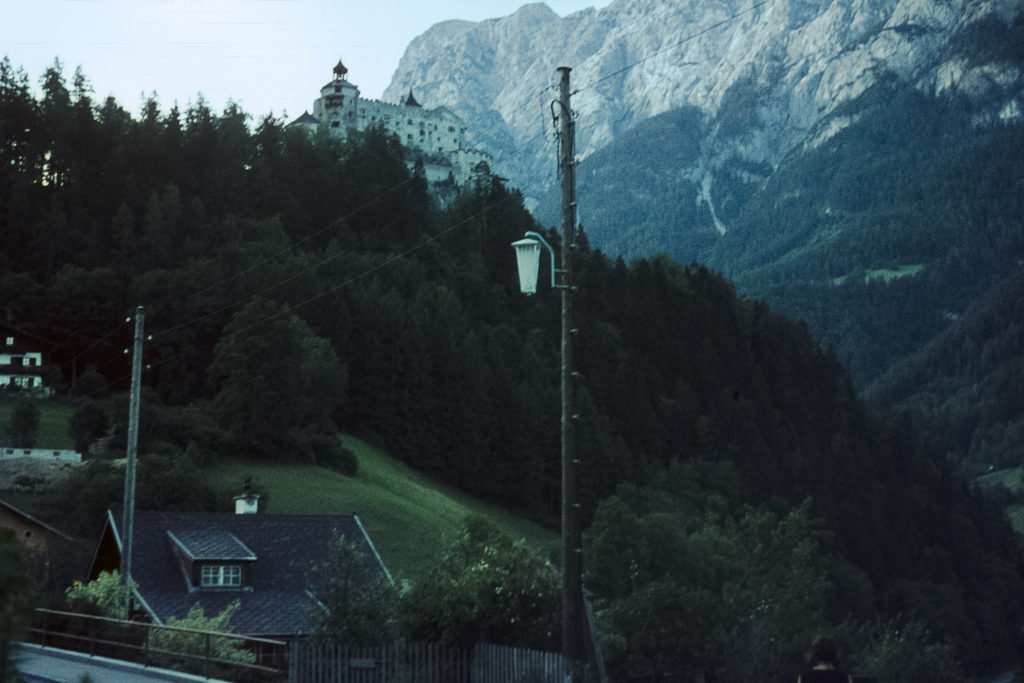
Eventually we wended our way down to the Austrian border with Yugoslavia at the Loibl Pass, and thence to Ljubljana, then as now the capital of Slovenia. However, in those days Slovenia was part of Yugoslavia, whereas now it is an independent state, a member of the European Union, the UN and NATO. We spent the night in a hotel in Ljubljana, then went on our way down to the Adriatic coast at Rijeka, and up the coast to the Italian border.
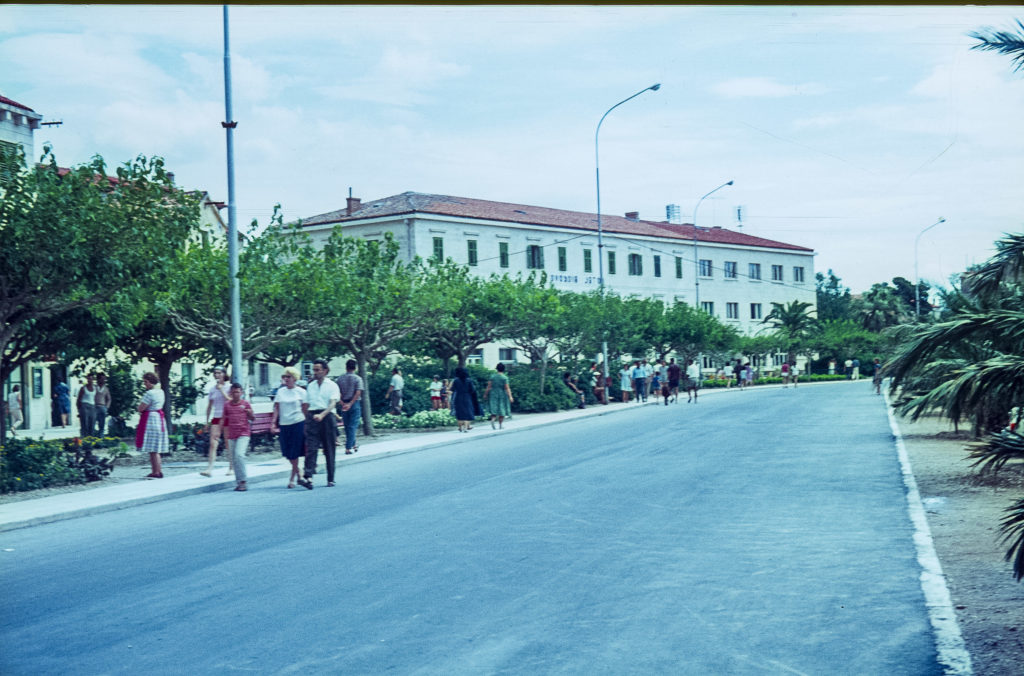
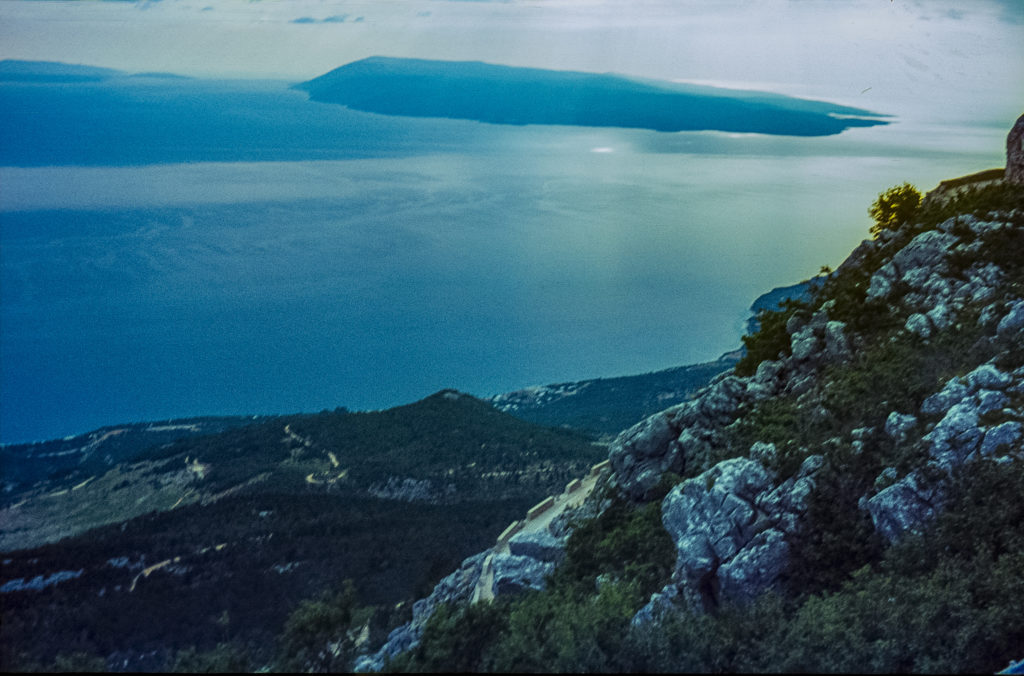
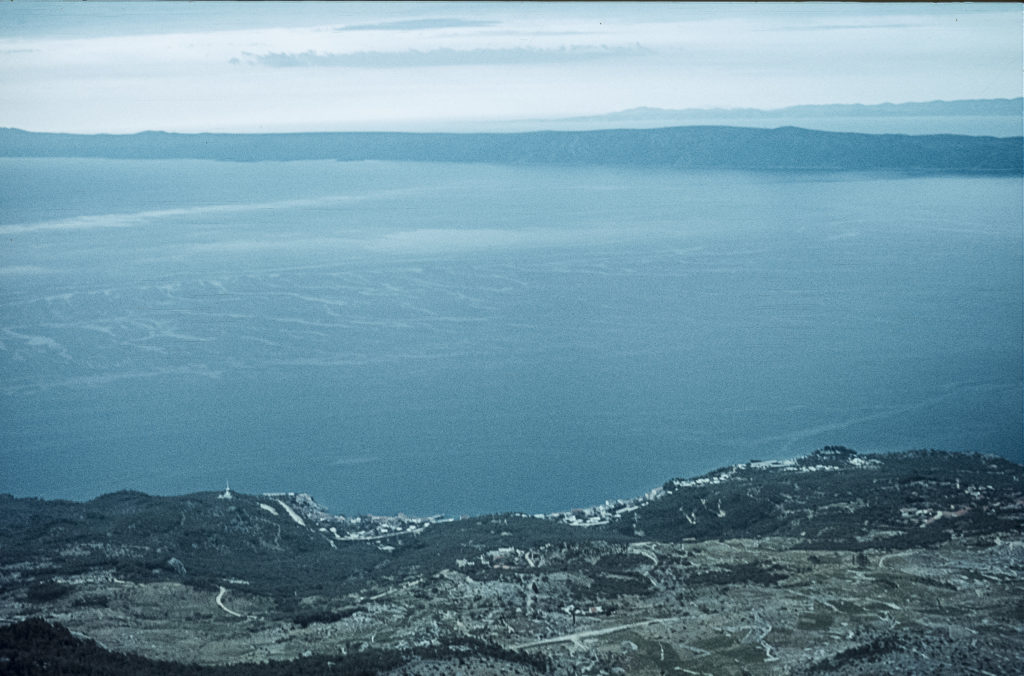
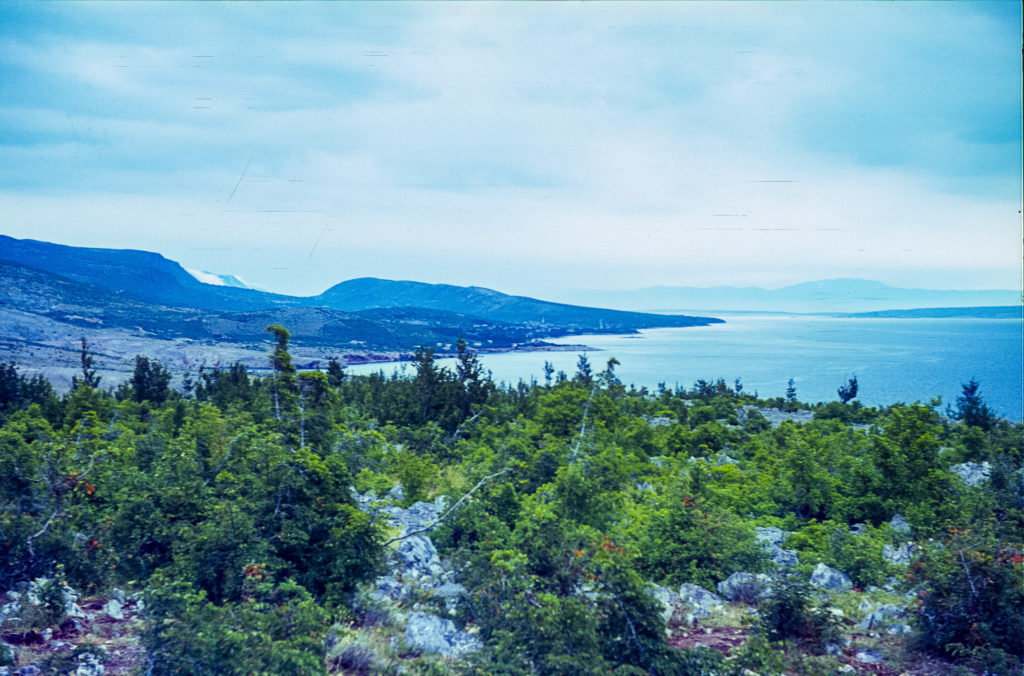
Crossing into Italy, we arrived at the city of Trieste, a lovely city which was the major seaport of the Austro-Hungarian Empire before World War I and its fourth-largest city. With the dismemberment of the Empire after World War I, Trieste was allotted to Italy as part of the spoils of victory. During the interwar period, Italy subjected the city, which had a mostly Slovenian population until then, to forced Italianization and most of the Slovenes emigrated. During World War II, the Jewish community – which until then had the third largest in Italy – was destroyed and its members sent to death camps. After World War II, Trieste became a bone of contention between Italy and Yugoslavia. It was briefly occupied by the Yugoslavs, then by the British and Americans. In 1947 it was declared a Free City under the protection of the UN, but continued to be administered by an Allied military government until 1954, when the Free Territory of Trieste was divided between Italy and Yugoslavia, with the portion containing the city itself going to Italy and the rest, which was mostly rural, going to Yugoslavia.
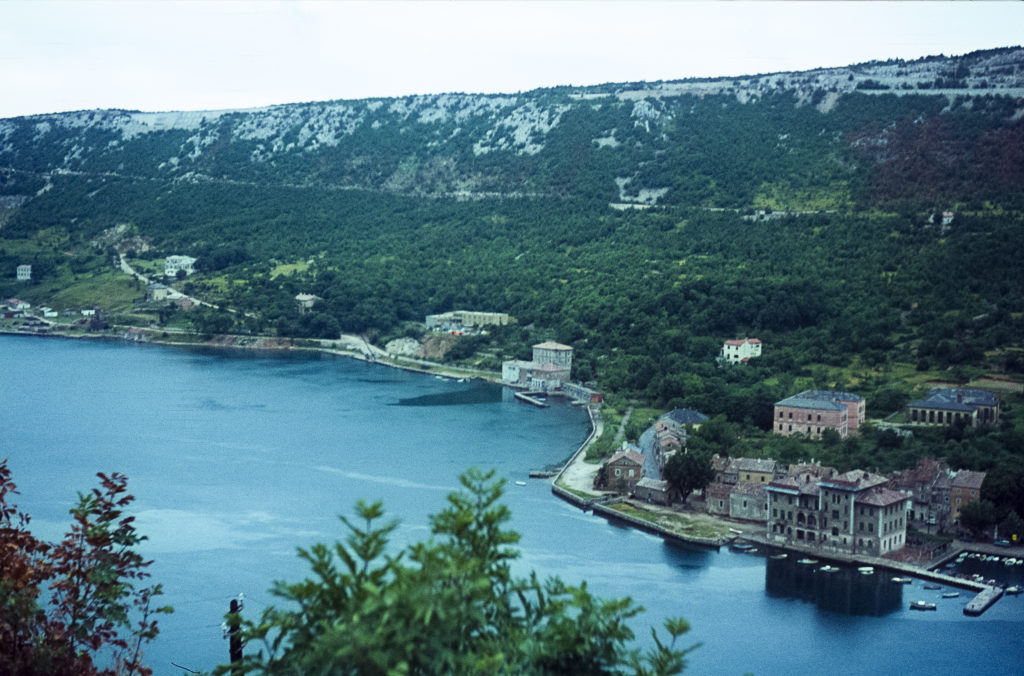
Trieste is located at the head of the Gulf of Trieste, at the northeast corner of the Adriatic Sea, across from Venice, which is at the northwest corner of the Adriatic. It is built at the foot of mountains, and the views of the city from the approach roads are stunning.
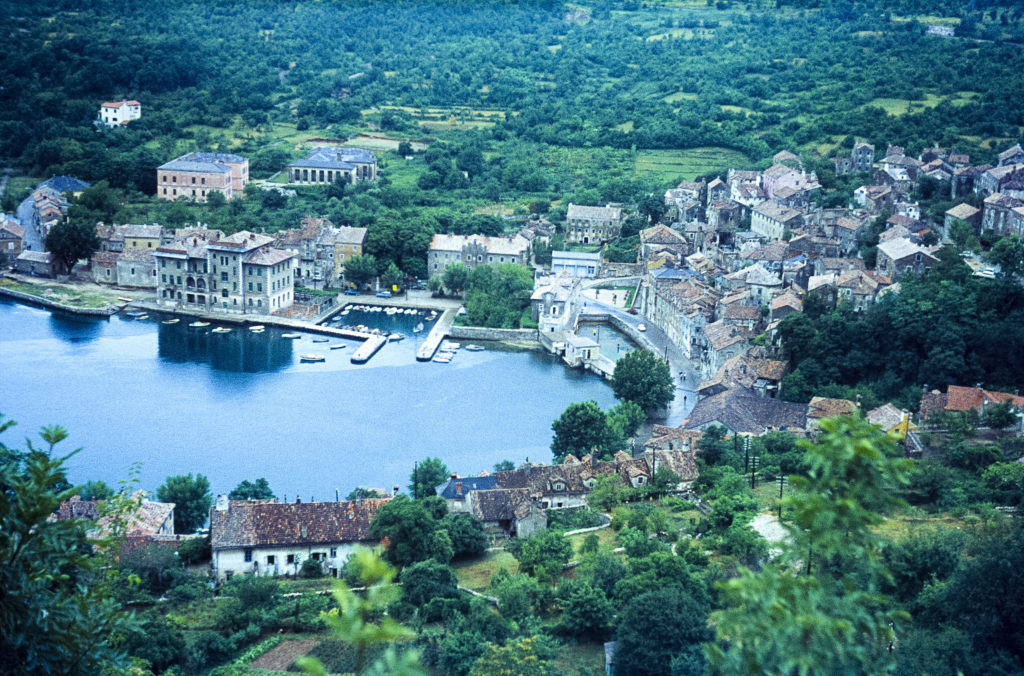
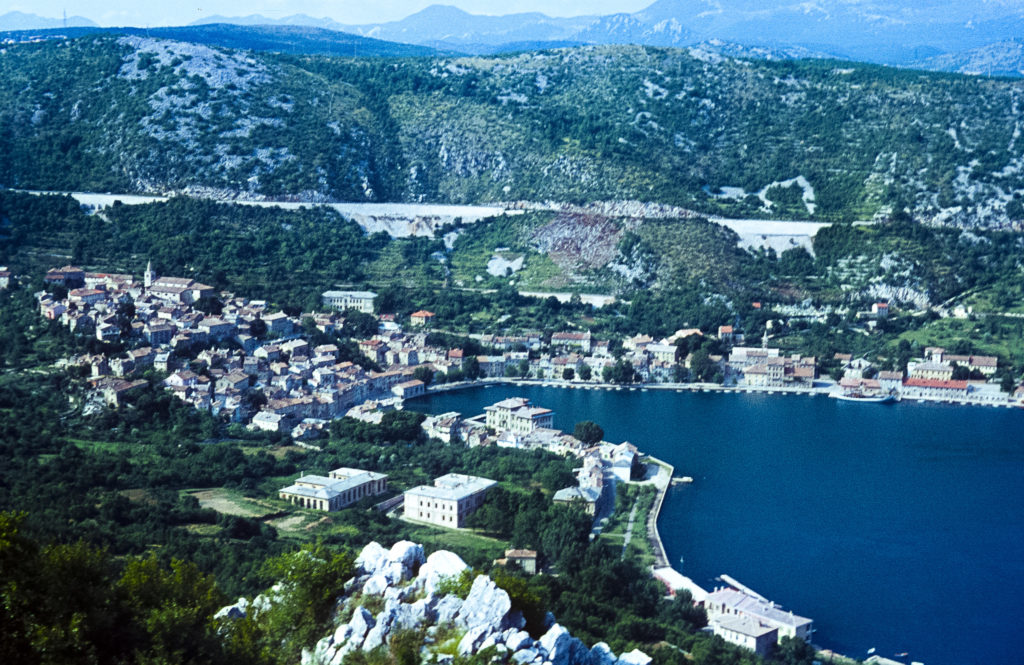
Trieste has an imposing seafront. After the dismantling of the Austro-Hungarian Empire at the end of World War I, the port went into decline until the 1930s, when Mussolini’s government poured resources into it in an attempt to develop industry there. After World War II Trieste again became somewhat of a backwater, but it appeared prosperous enough when we were there in the 1960s; and since then it has experienced an economic revival, again becoming a major trade hub with extensive container ship and oil terminal facilities. It is also considered the coffee capital of Italy, importing more than 40% of Italy’s coffee, according to Wikipedia.
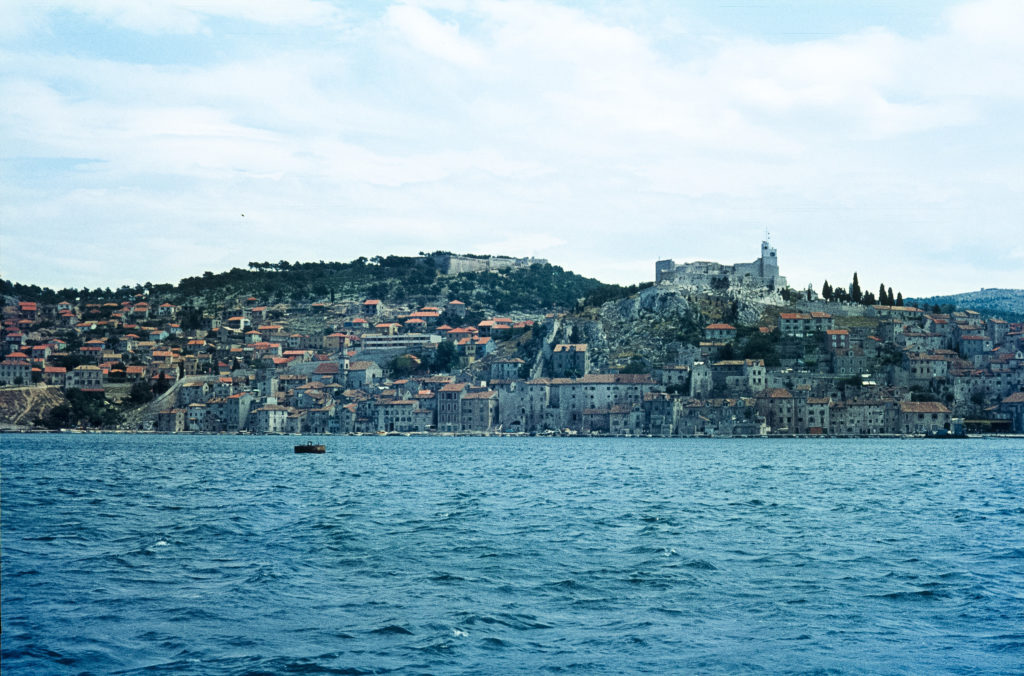
Descending the steep road down to the harbor, we parked the car and strolled around for a few minutes. We discovered that Trieste had a very fine marina with many well-appointed yachts.
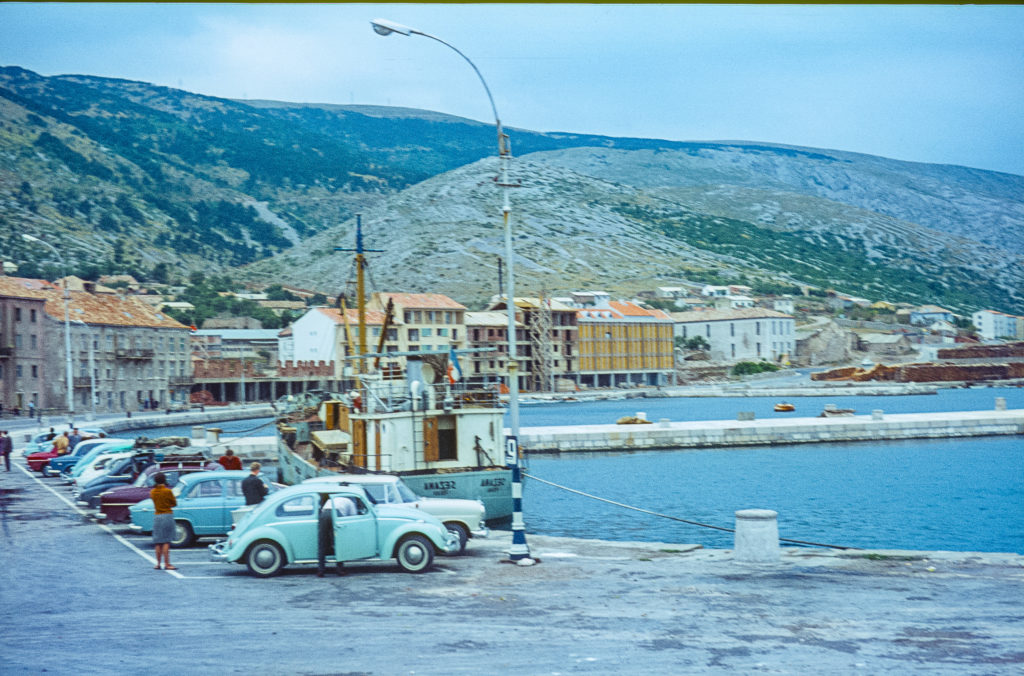
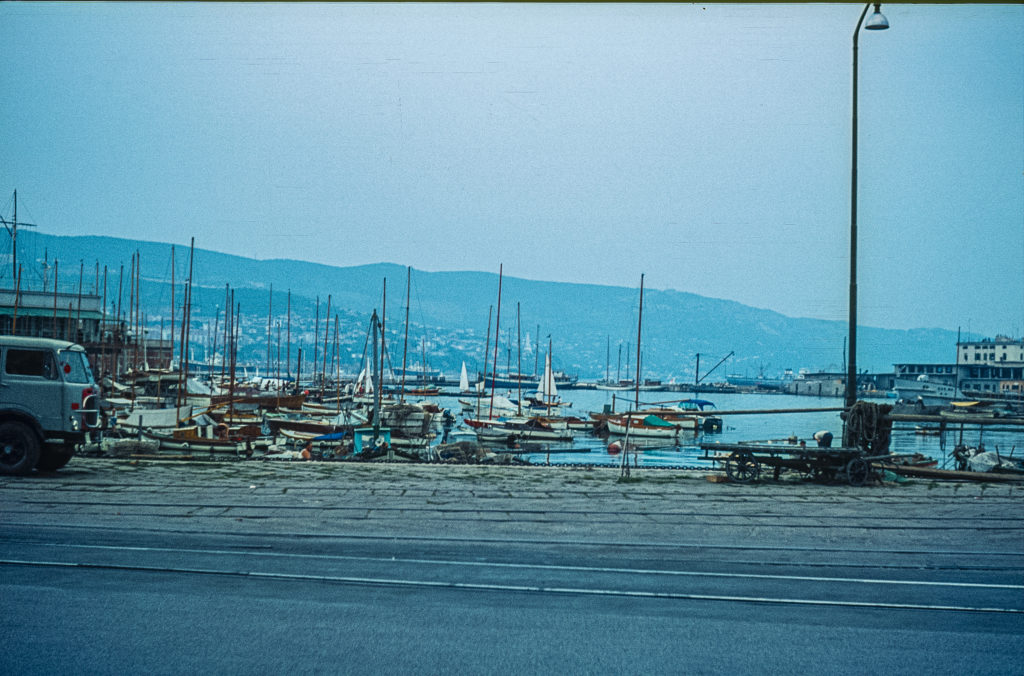
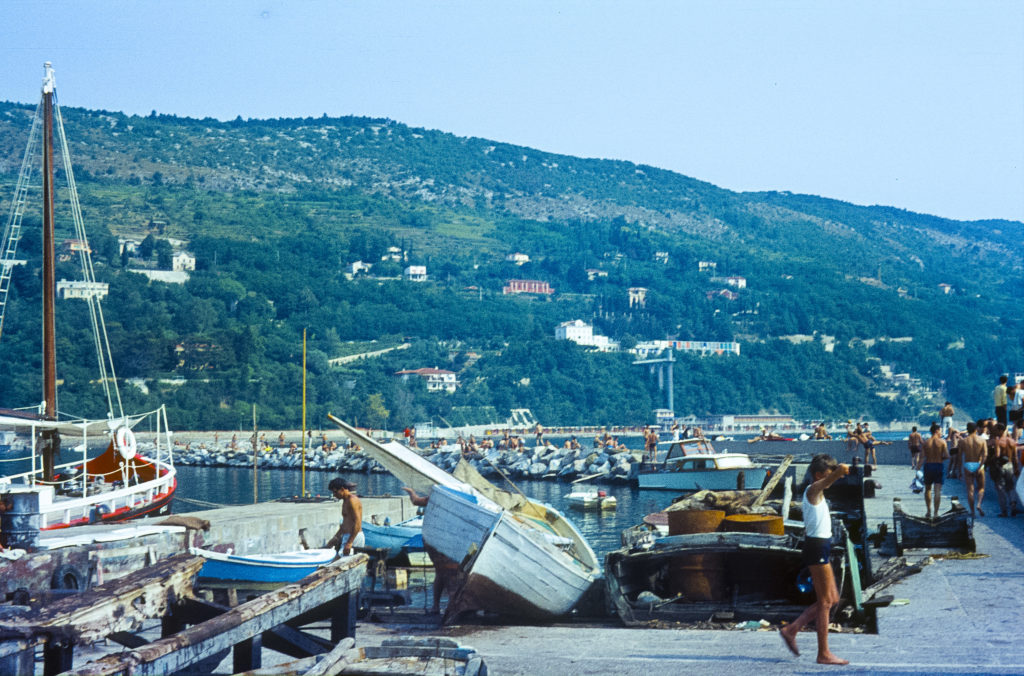
Then it was on to Venice. But somehow, on the way to Venice, we got sidetracked, or took a wrong turn, and wound up in the Dolomites, the steep and rugged peaks of Northern Italy. The area had been the scene of bitter battles between the Italians and Austrians in World War I, and I remember seeing old ruined forts and concrete pillboxes with rusty gun emplacements during the journey.
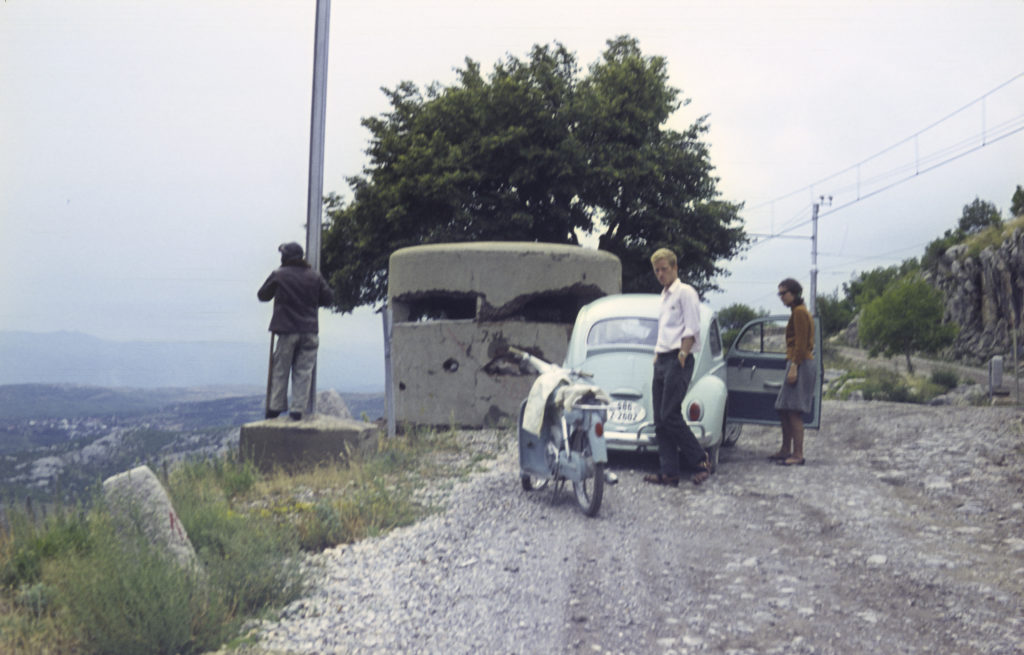
Coming south again, we happened on the town of Longarone. I had no idea we would encounter this place, but once I saw it I remembered reading in the newspapers about it. The town is located on the Piave River, a few miles below the Vajont Dam, one of the tallest in the world at 860 feet high. A few months prior to our arrival, a large section of Monte Toc, the mountain above the dam, had crumbled away and fallen into the reservoir, creating a wave that overflowed the dam and roared into the valley below, wiping out most of the town of Longarone as well as several others in its path. In an instant, over 2,000 people were swept away. When we came to the town, we saw that the huge wave of water had acted like a knife, slicing houses in two, leaving one half standing while the other was carried away. The passage of water left the bottom of the valley filled with mud, which dried into a white and bare desert, marked here and there by wreaths placed by the relatives of the dead.
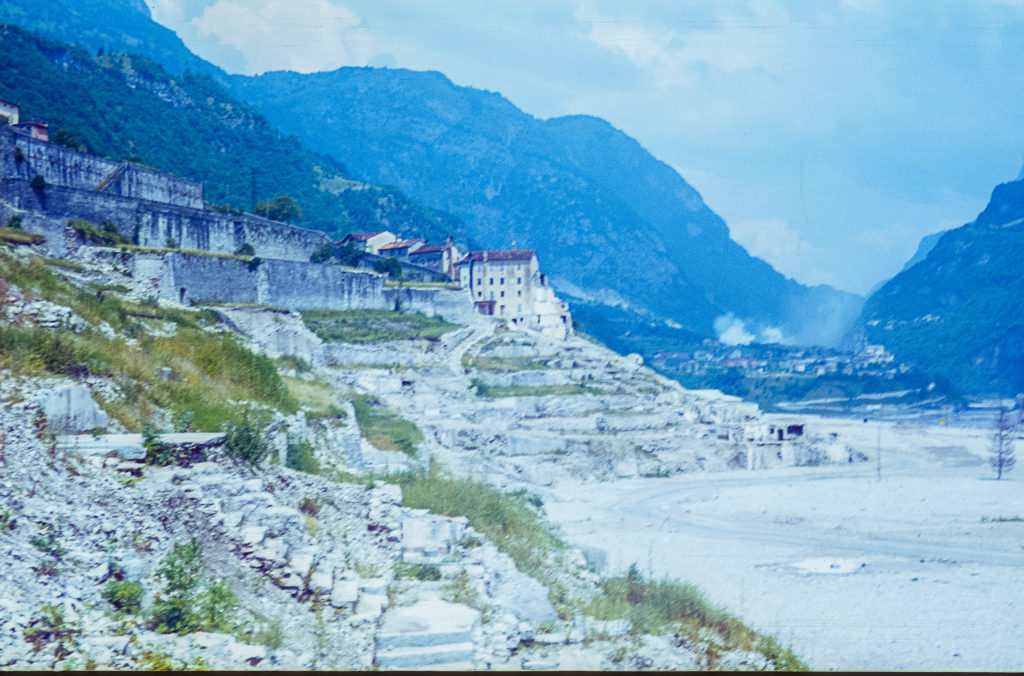
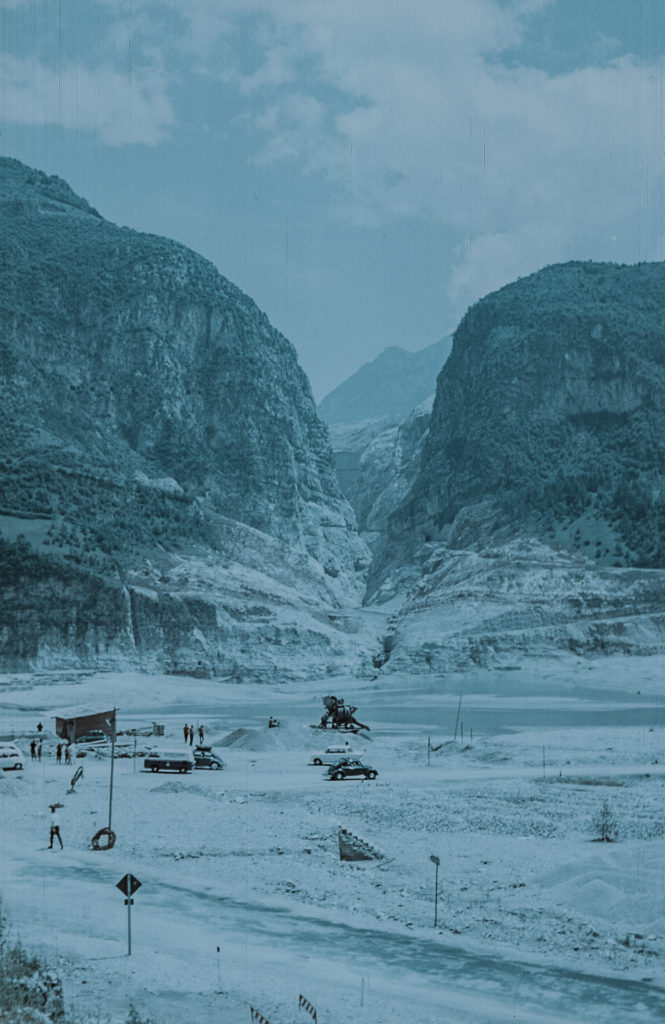
Eventually, after an exciting drive along narrow mountain roads where mad Italians continually threatened to kill us by suicidally passing us and each other in their underpowered Fiats, we descended into the Venetian plain and made our way to La Serenissima, the Queen of the Adriatic.
We were able to spend an afternoon in Venice, enough time to cruise on the canals and see a few of the major landmarks. Venice then as now was mostly closed to automotive traffic, and we made our way around on the vaporetti, motorized pedestrian ferries that are ubiquitous on the canals. We didn’t ride in any gondolas.
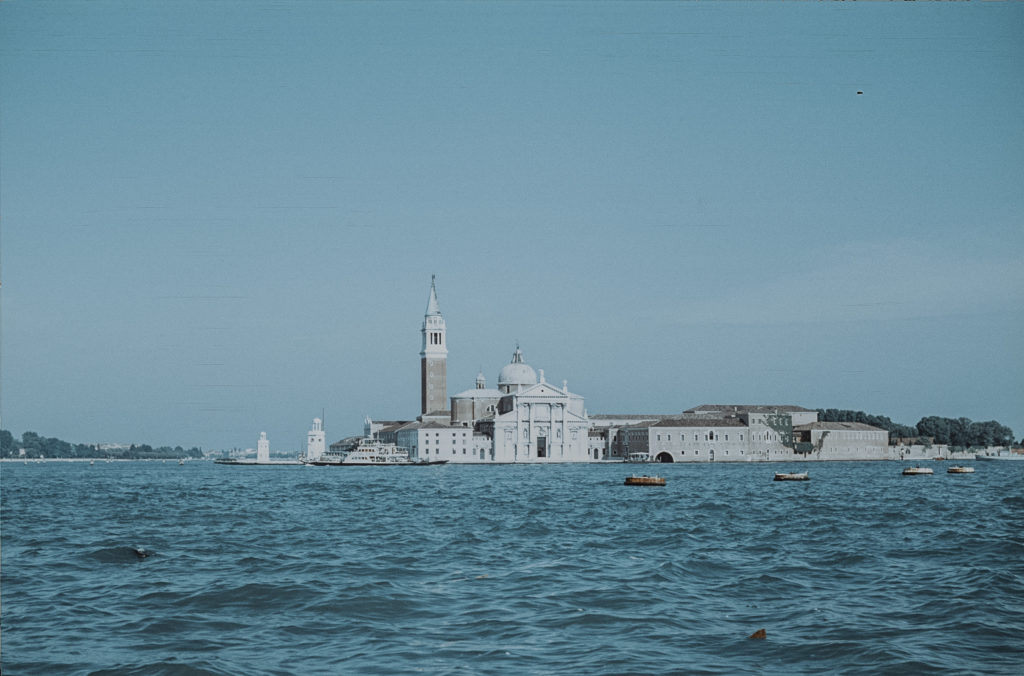
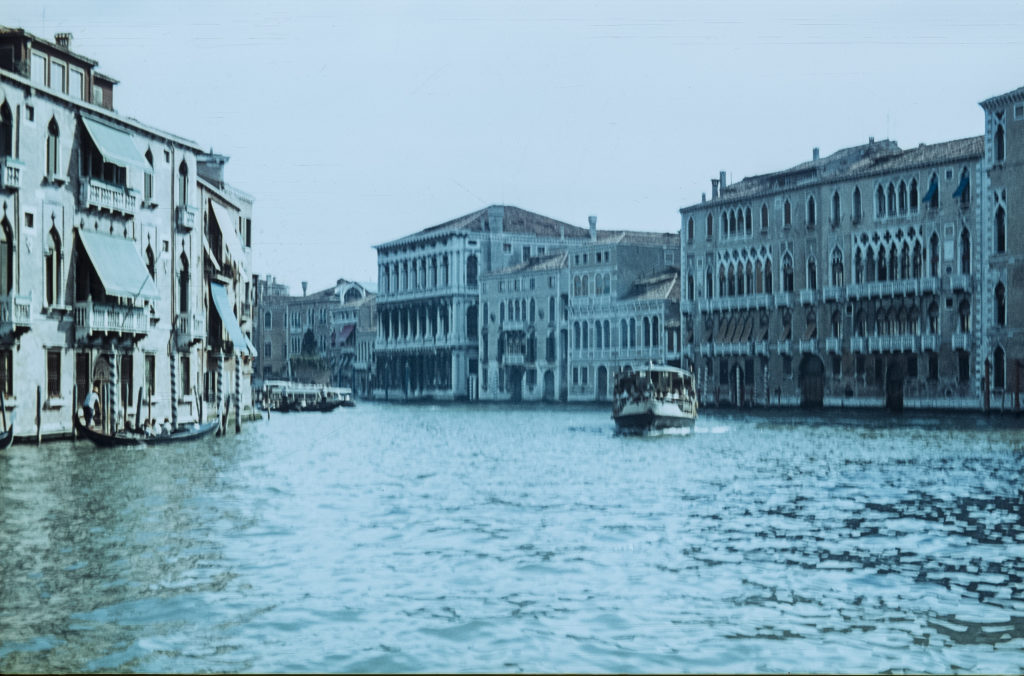
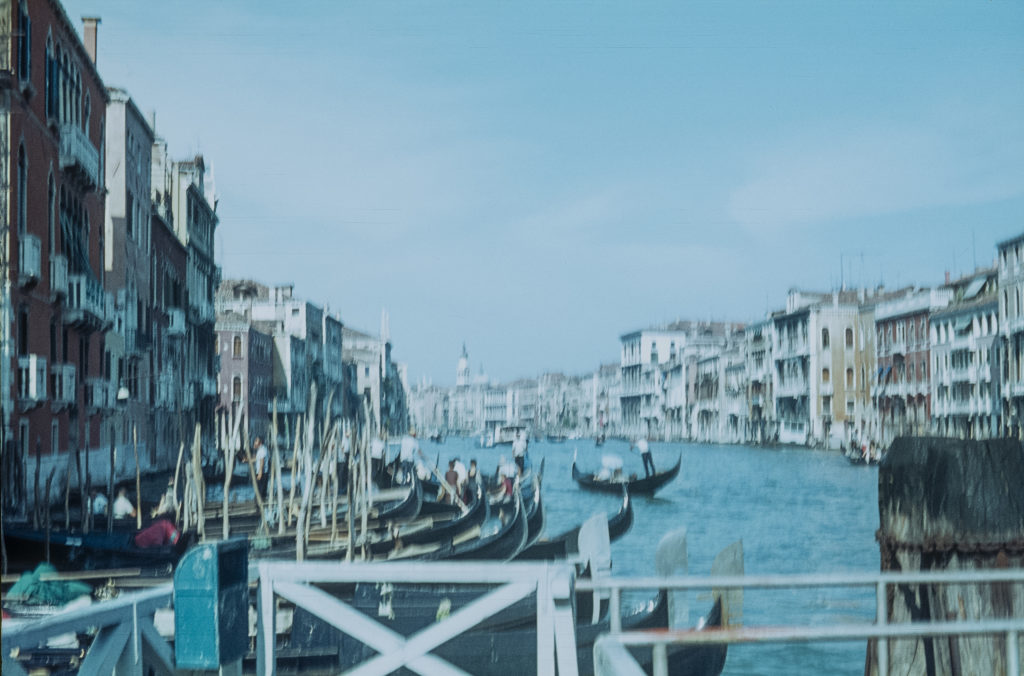
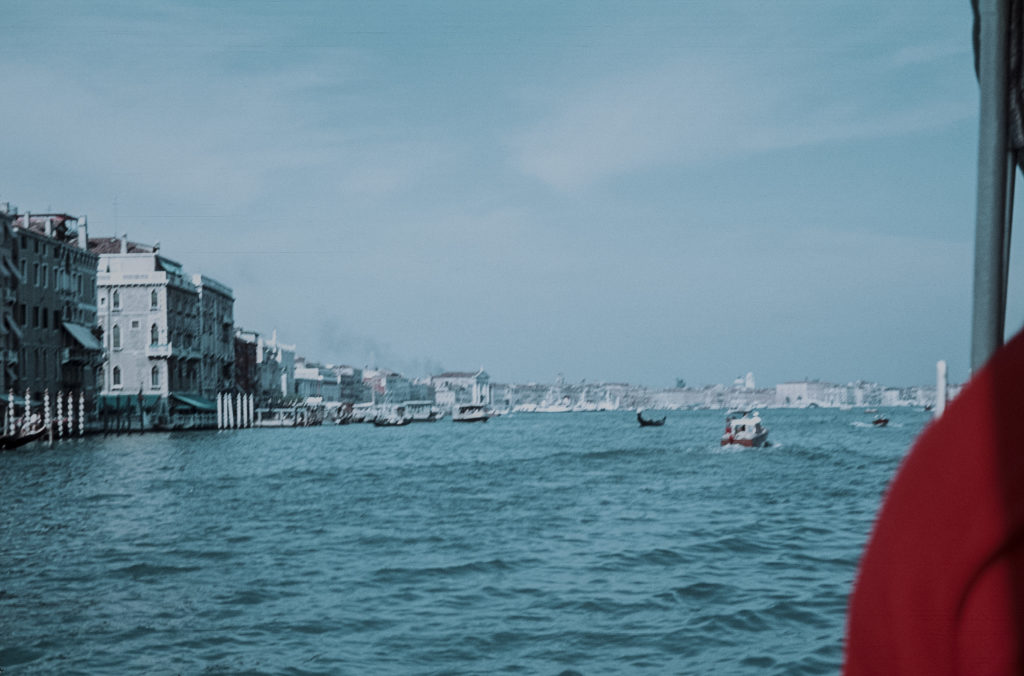
We didn’t venture far from the Grand Canal, but there was plenty to see on it. We did make it to Murano, the island which is famous for its glassmaking industry, and I bought some glassware there.
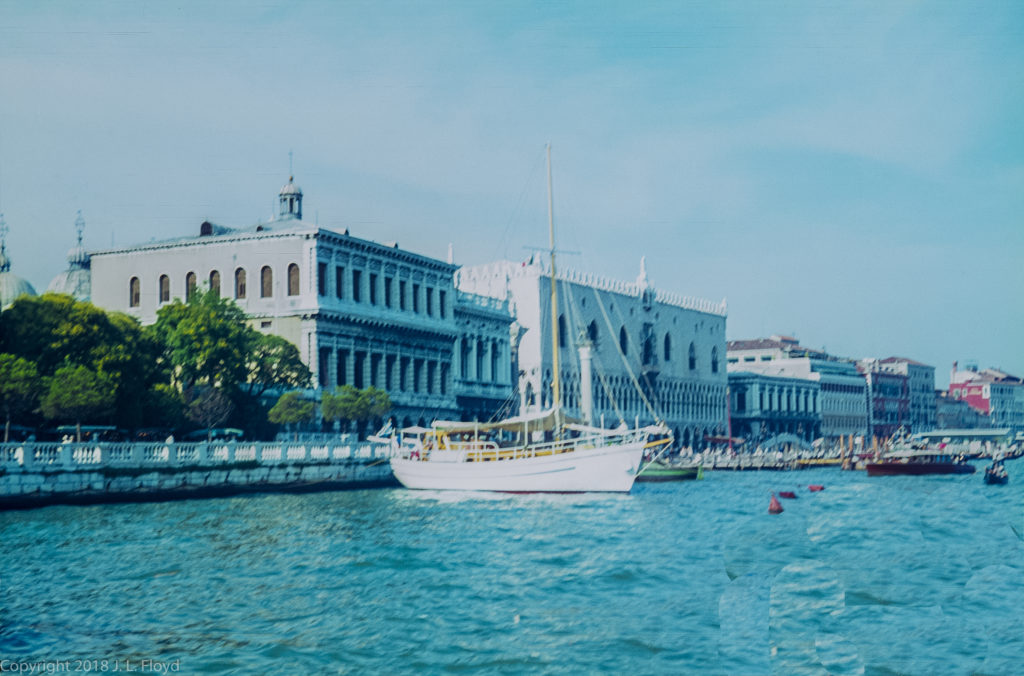
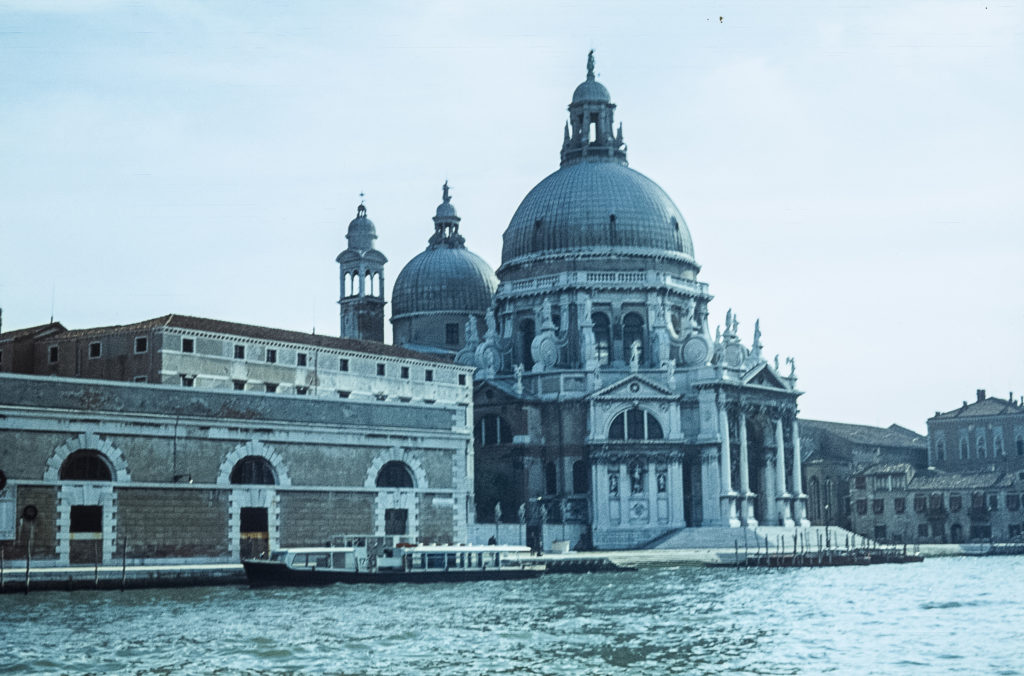
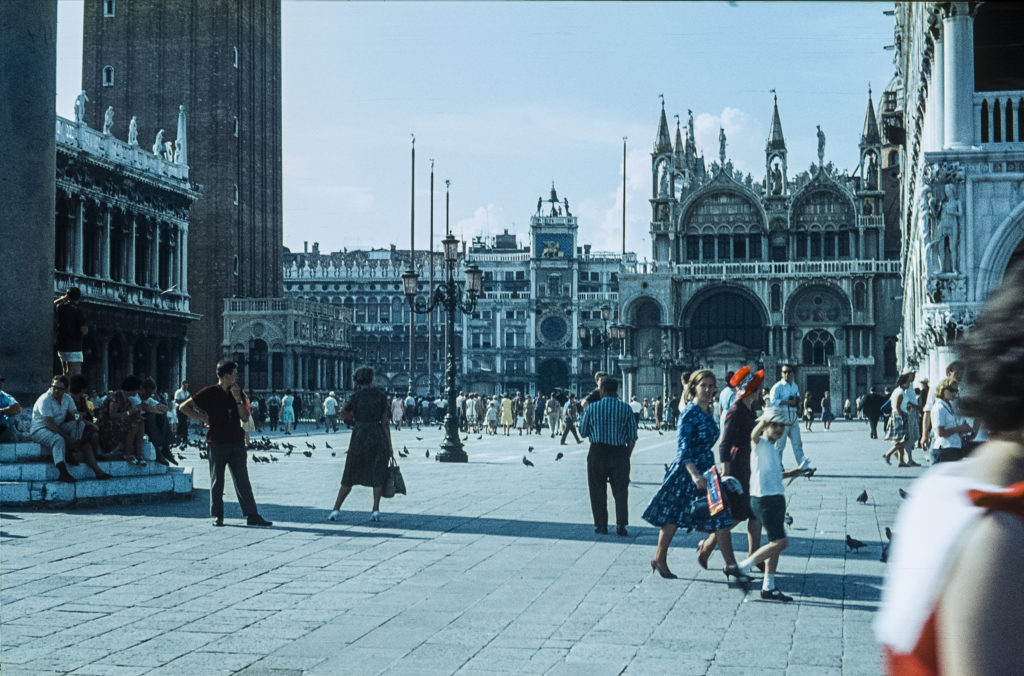
From Venice we headed south along the coast, then turned inland and arrived at a place which I had no idea existed until then – the independent country of San Marino. Completely surrounded by Italy, San Marino is like something out of a fairy tale. It is built on a mountain, Monte Titano, which towers a thousand feet above the surrounding plain. Perched atop the mountain are three castles; the oldest, Torre Guaita, pictured below, dates from the 11th century.
San Marino was founded in 301 AD and claims to be the oldest sovereign state in the world.
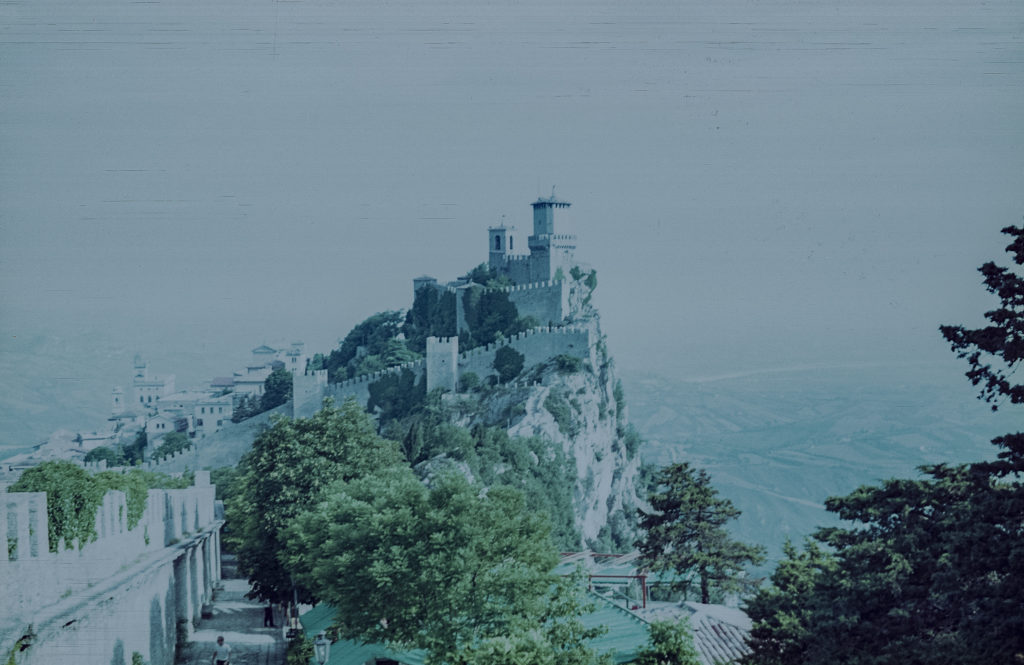
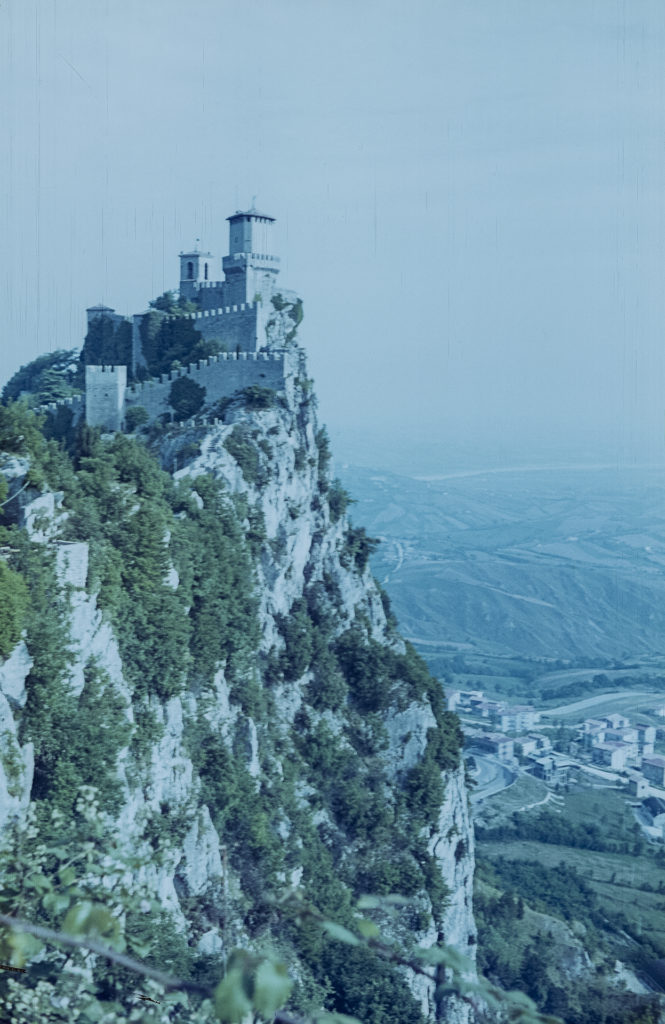
Torre Cesta, shown below, stands on the highest of Monte Titano’s three peaks. It was built in the 13th century on the ruins of an old Roman fort and now contains the Sammarinese Museum of Ancient Arms, a showcase of medieval weaponry. We did not see the third tower, the Montale, which is privately owned and not open to the public.
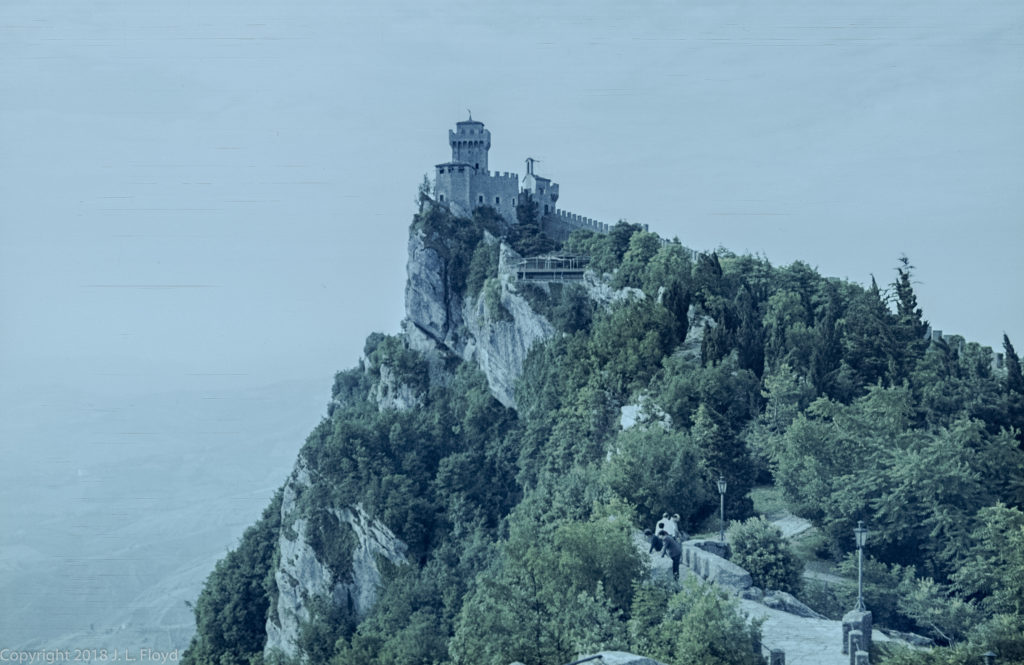
Continuing on from San Marino, we wanted to head for Tuscany, but to do so we first had to head southward to get to the main highway over the Apennine mountains, which bisect the Italian peninsula. We traversed the regions of Marche and Umbria, passing through a lot of pleasant Italian farm country along the way, and stopping occasionally to rest and take pictures.
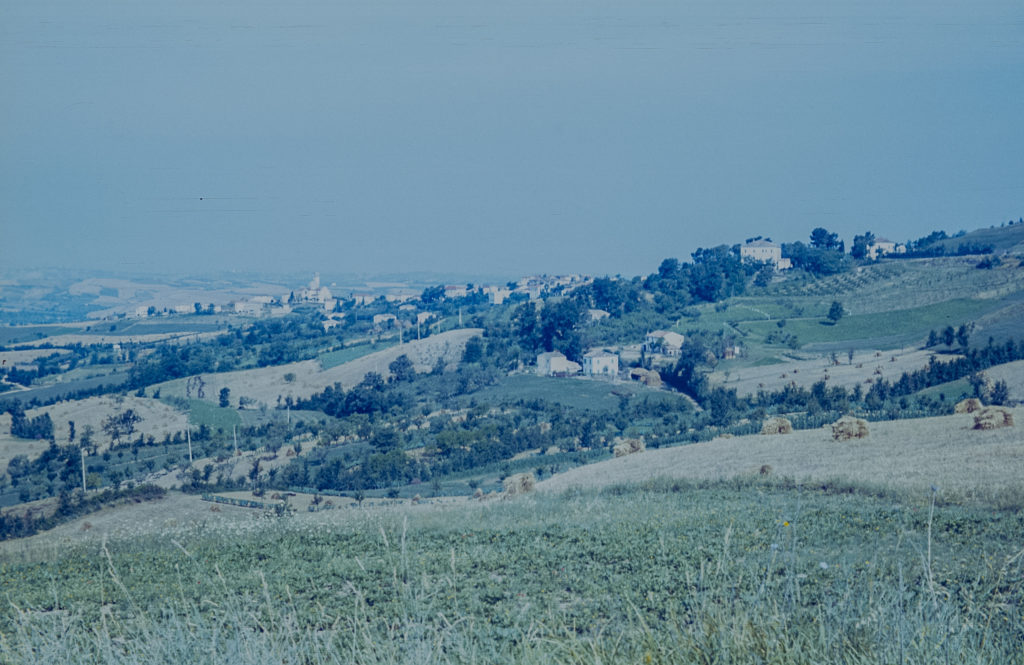
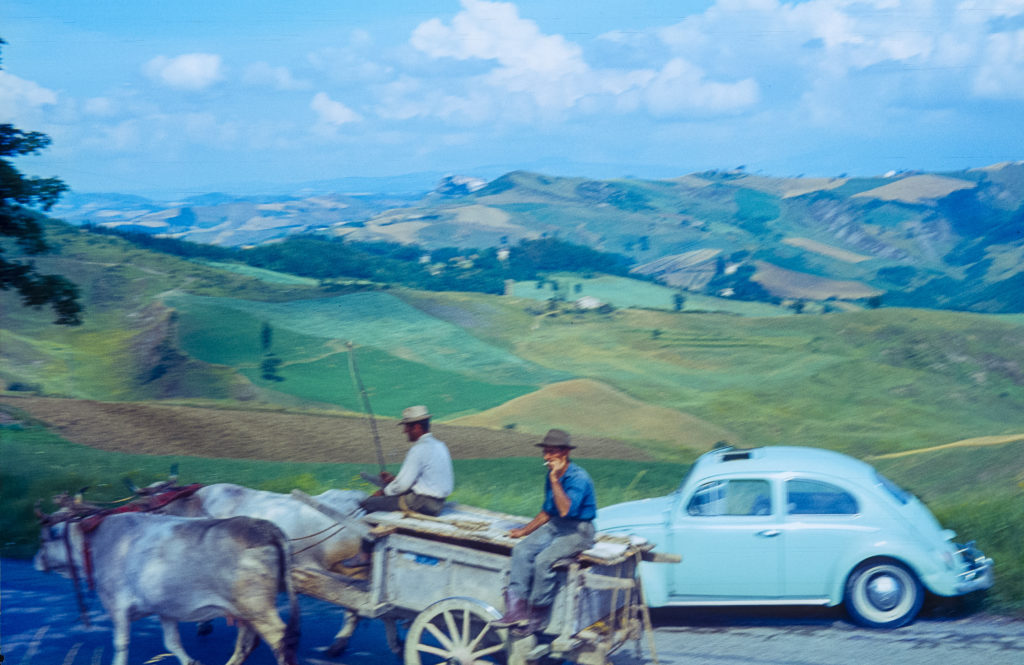
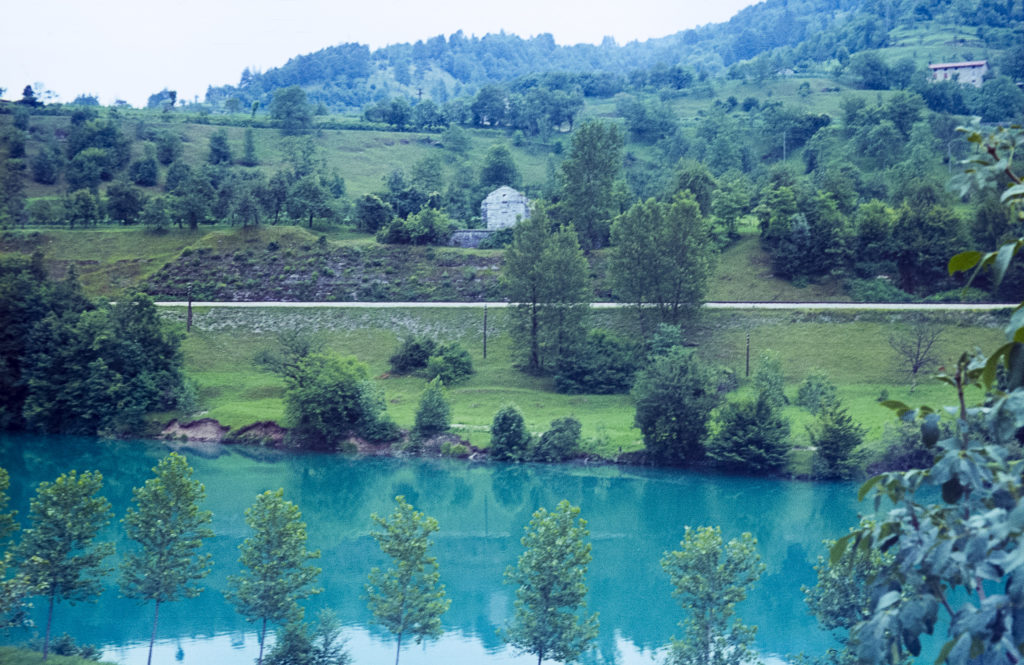
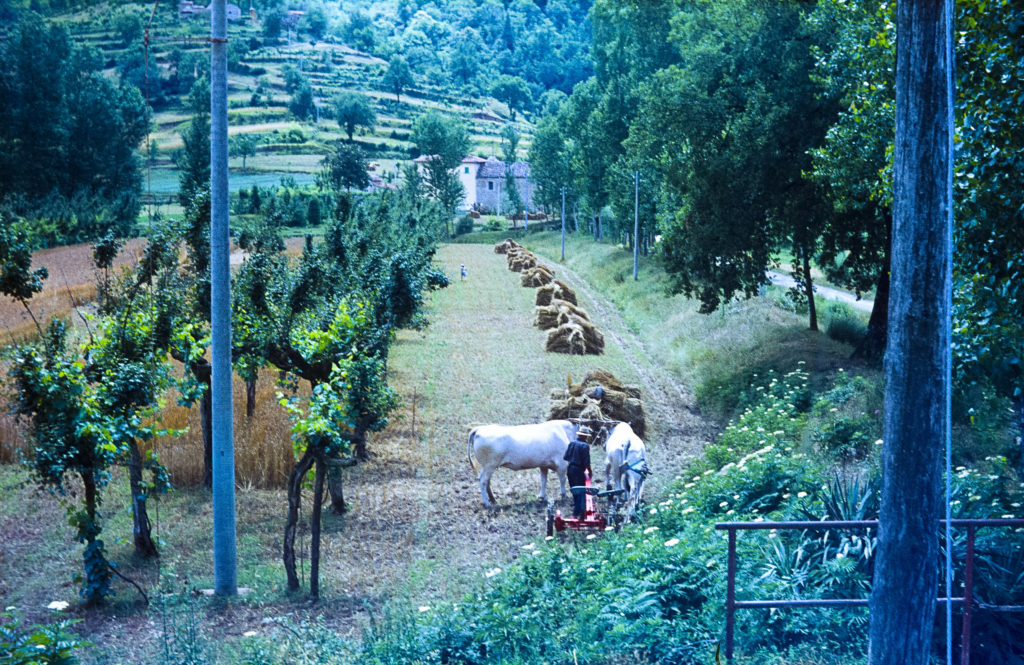
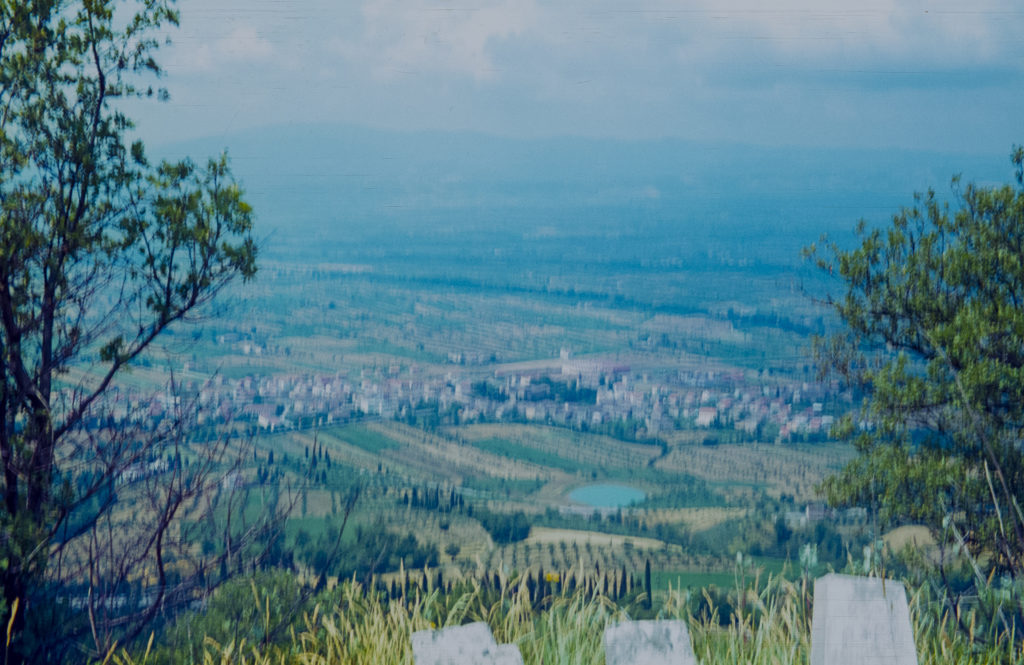
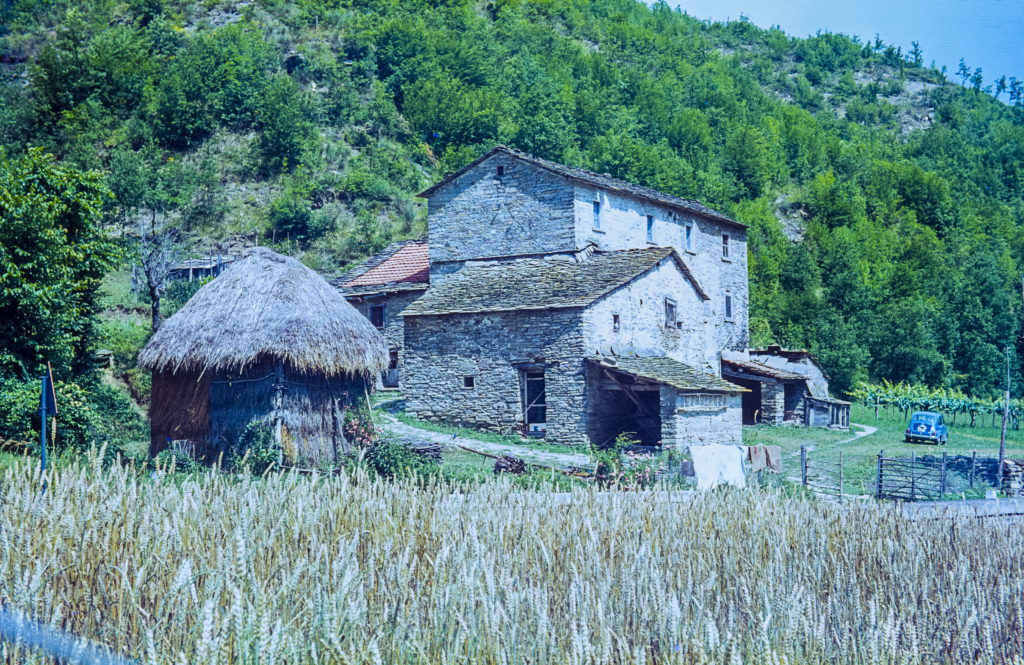
Somewhere along the way we passed a walled city perched on a high sloping hill – I think it was Urbino, though I can’t swear to it.
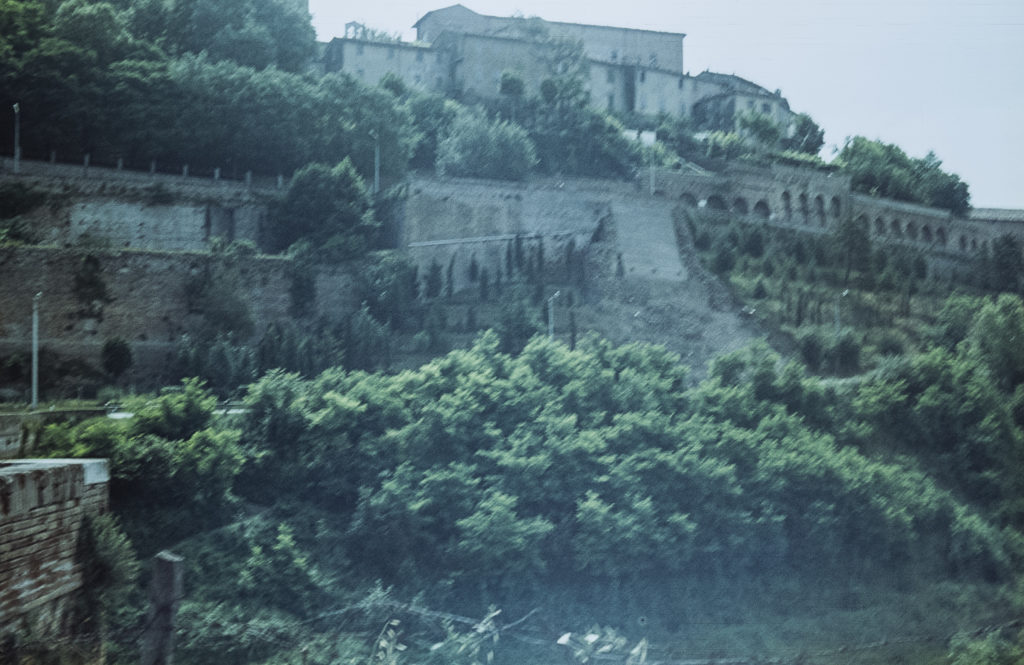
Finally we came down from the Appenines to the plains of Tuscany and turned north toward Florence. One of the signs in the picture below points the way toward Florence – Firenze in Italian – but it’s impossible to make it out in this very blurry photo. I think I took this from the moving car, and my little Voigtländer would only go down to 1/125 second, not quite fast enough to freeze the motion. At this point we were traveling fast and not stopping much, because it was Sunday and Bill, the driver, for some reason needed to be back in Munich by Monday morning.
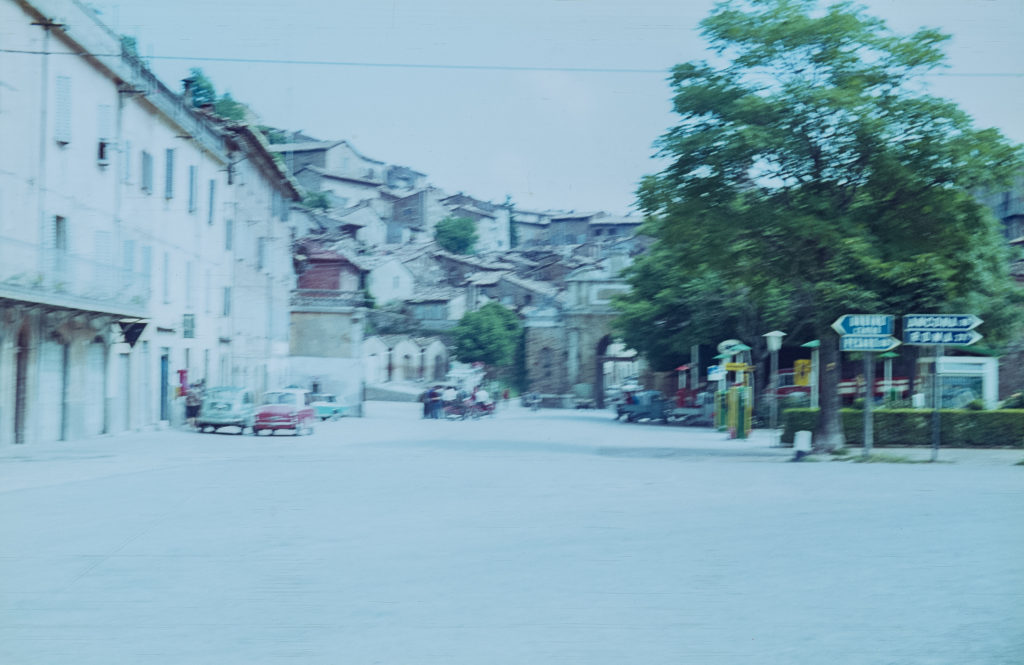
We were only able to spend a few minutes in Florence, probably less than an hour, but I did have time to shoot this picture, which features the great cathedral of Florence, the Duomo, in the center, with the tower of the Palazzo Vecchio at left.
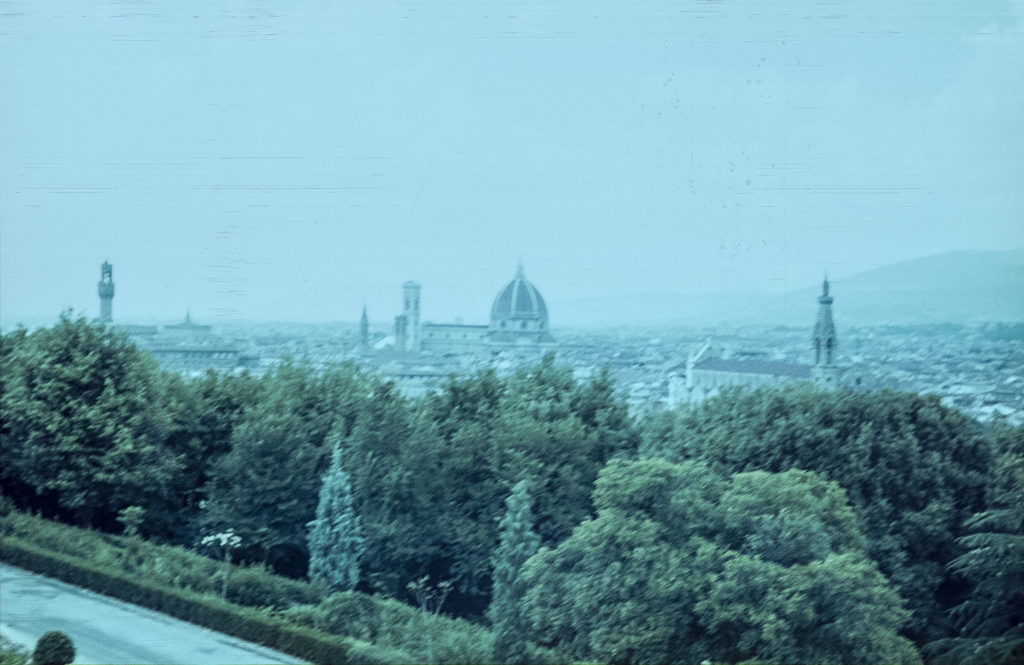
We headed back to Austria via Bologna, Verona and the Brenner Pass, and thence to Munich via Innsbruck, stopping nowhere along the way except for gas. We had to drive all night to get back to Munich by 9 AM Monday morning. I remember that somewhere outside Innsbruck, in the dead of night, a luminous skull and crossbones suddenly popped up in front of us, like a jack-o’lantern on Halloween, scaring us nearly to death. It was just a warning sign for a railway crossing – a very effective attention-getter. We actually had a very close shave, though, after crossing the German border on a narrow mountain road; sometime after dawn Bill nodded off at the wheel and I was startled out of a near-doze by the sight of a bus hurtling head-on toward us because we had strayed onto the wrong side of the highway. I shouted and woke up the others, we all started yelling and woke up Bill, who righted the car and got us out of harm’s way. We were pretty worried about going any further with Bill driving, but he wouldn’t let anyone else drive because it was his dad’s car and the insurance didn’t cover us. He insisted that he would be all right after that, and he was as good as his word; we arrived back in Munich that morning without further incident.